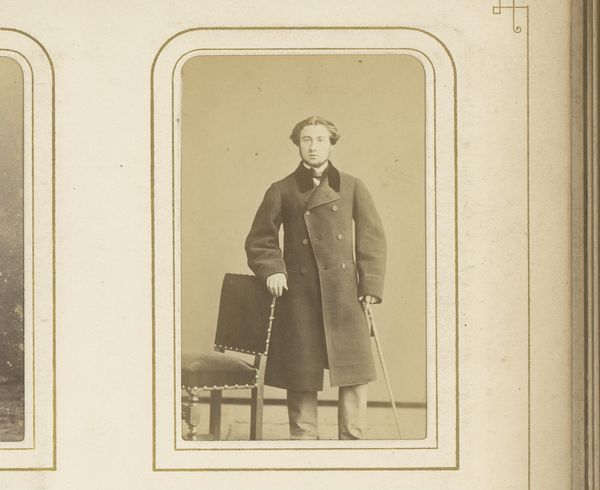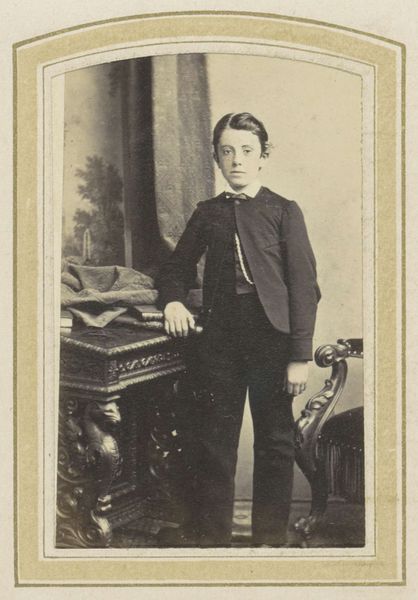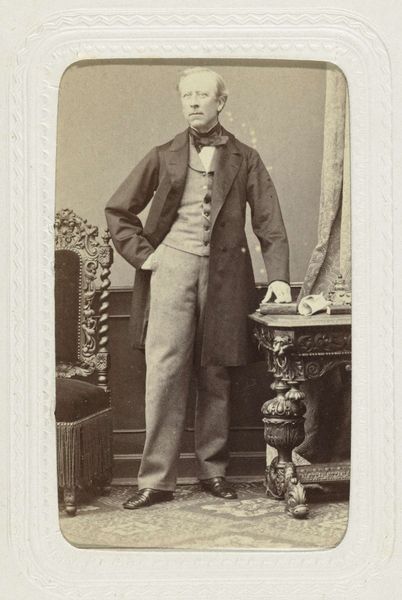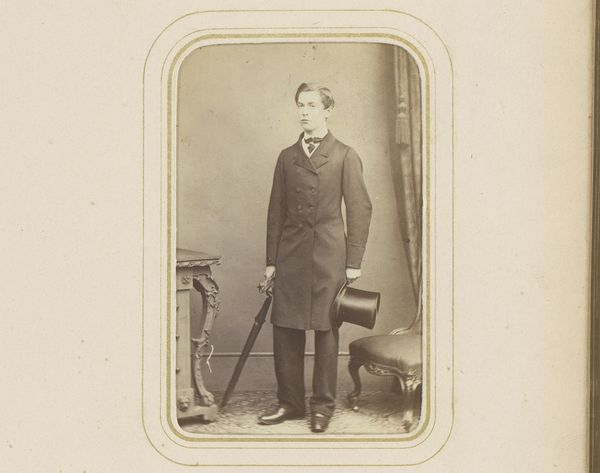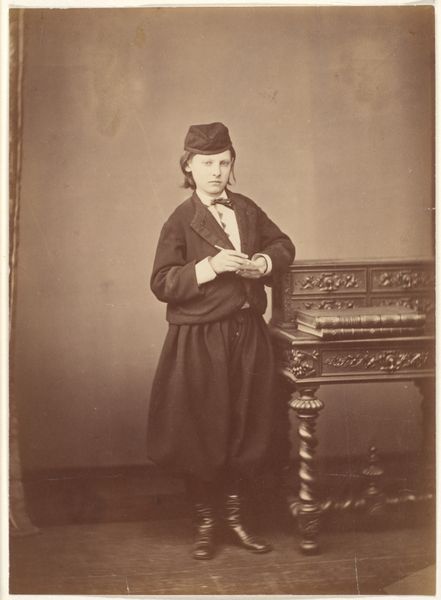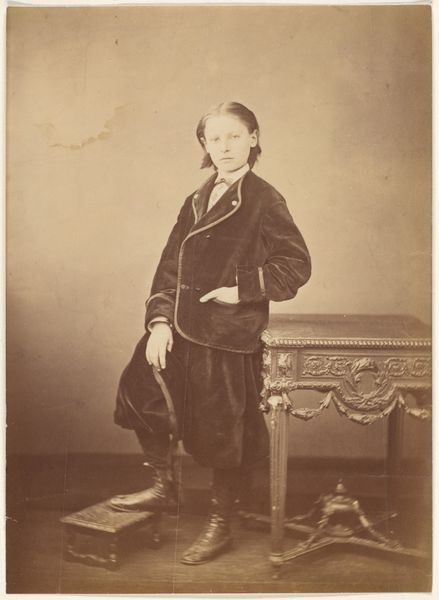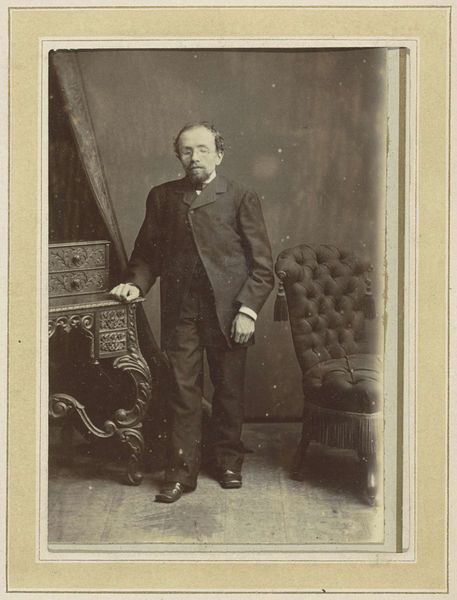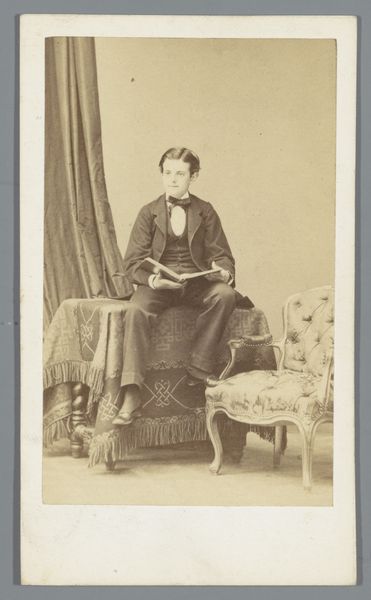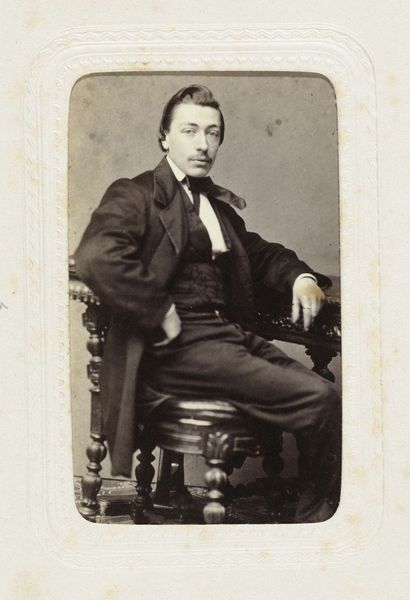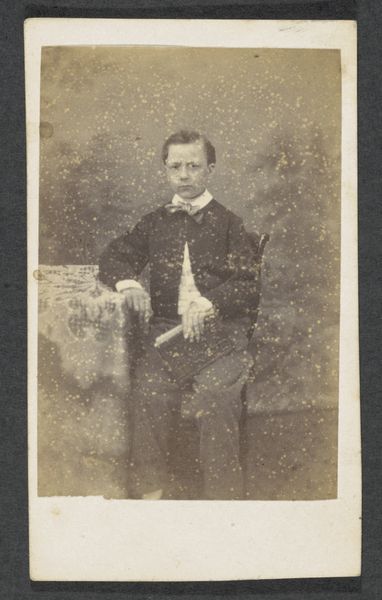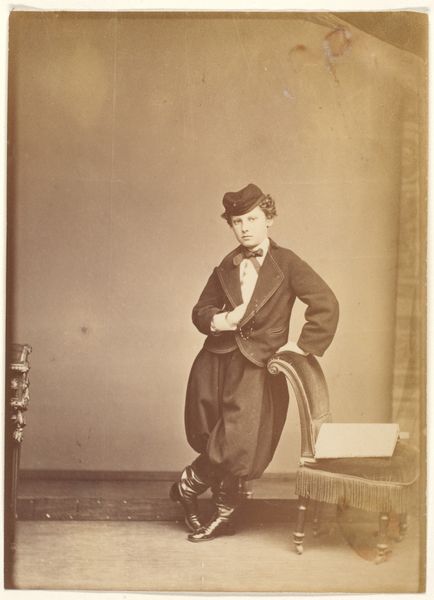
Studioportret van een jongen in drie delig pak naast een tafel c. 1863 - 1866
0:00
0:00
daguerreotype, photography
#
portrait
#
daguerreotype
#
photography
#
historical photography
#
realism
Dimensions: height 80 mm, width 54 mm, height 296 mm, width 225 mm
Copyright: Rijks Museum: Open Domain
Curator: Here we have "Studioportret van een jongen in drie delig pak naast een tafel", which roughly translates to "Studio Portrait of a Boy in a Three-Piece Suit Next to a Table", attributed to Albert Greiner and dating from about 1863 to 1866. It's a daguerreotype. Editor: There's a stiffness, isn’t there? A formality that’s almost oppressive, but the boy himself, the curve of his cheek, has such delicate humanity that emerges. Curator: Well, a daguerreotype demands a still subject and painstaking process. Think about the social context: this was a new, almost magical, technology at the time. The creation of these images meant specialized skills and costly materials - silver-plated copper, mercury vapors to develop the image. A photographic portrait meant investing both money and time. Editor: It makes you wonder what this portrait signified, who it was for. The drape cascading down next to the young man almost hints at classical theatrical portraits, perhaps imbuing him with that gravity and power of narrative, even though he’s just a young man. The choice of accessories seems significant. A hat set delicately on an ornate chair, he seems carefully positioned, to project an aura of belonging. Curator: Note, also, the table with a book - and it may signal aspiration and a path into a learned life for this boy. It really offers a snapshot of mid-19th century class aspirations and social codes. Editor: Indeed. A snapshot imbued with enduring symbols, perhaps, but constrained, limited in ways which photography has subsequently freed us from. This portrait captures an intersection of technology, symbolic representation and human emotion. Curator: And from a production standpoint, an intriguing window into a specific moment in history when photography was still emerging as a democratizing, but yet constrained force, offering new representational power at the cost of craft. Editor: So both literally, and symbolically framed within its era, it gives us something profound to reflect on. Curator: Absolutely. Food for thought on how we present ourselves and the things we value, and the work, labor and materials it takes.
Comments
No comments
Be the first to comment and join the conversation on the ultimate creative platform.
